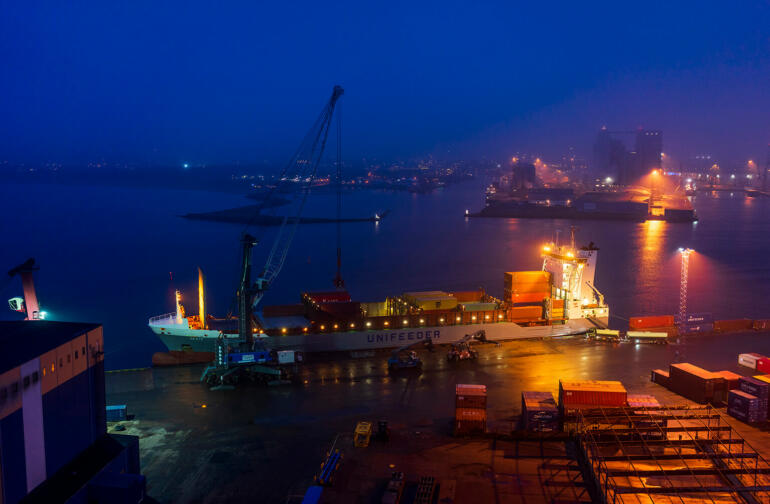SEK 700 million for strengthened port logistics in Halmstad, Halland.

There will be a massive investment in logistics in Halmstad in the next few years. This is clear since Halmstad municipality this week published its budget to develop and strengthen the infrastructure in and around the port. A total of SEK 700 million is to be invested over the next five years. The investment includes stage two of the Southern entrance, an expansion of Oceanhamnen and the establishment of new railway tracks.
“Now we are stretching the bow and making a real investment in infrastructure and logistics in Halmstad. Halmstad is a strongly growing logistics hub and with the investment we will create very good conditions for efficient transport to and from the port”, says Stefan Pålsson, chairman of the municipal board.
“This is the result of long-term strategic work and it is positive that we can now get started with the projects. Demand for intermodal logistics solutions in Halmstad is extremely strong and with the establishment of new railway infrastructure in the port area, we have good conditions for increased capacity and growth within the railway segment”, says Björn Alvengrip, CEO of HallandsHamnar AB.
Greater depth and new areas
In Oceanhamnen, a new dock of 200 meters and a new area for cargo handling of 21,000 square meters will be established. Export volumes from Stena Recycling are being moved out to the new dock where the port gets an increased depth of 12 metres. When the port can receive more deep-draft ships, there is potential to increase capacity in this segment by around 40 percent and at the same time open up for new logistics flows. Construction will start in early 2023 and is expected to be completed in the spring of 2024.
Sustainability and local environment in focus
The dock in Oceanhamnen will be weatherproofed and the surfaces will be raised to three meters above sea level to withstand climate change. The new port area is being prepared with modern technology to enable electric machines and vehicles and so-called smart sensors. At several locations within the harbor area, these sensors are placed to collect data regarding environmental factors such as weather and water depth changes. Within the area, a high-voltage network is being established to meet future capacity needs and the possibility of upgrading the power outlet if necessary.
“When we move the cargo handling out of an older port area, we also enable urban development in the old port area and reduce the risk of noise and dust from the cargo handling”, says Björn Alvengrip.
Visit Port of Halland for more information.